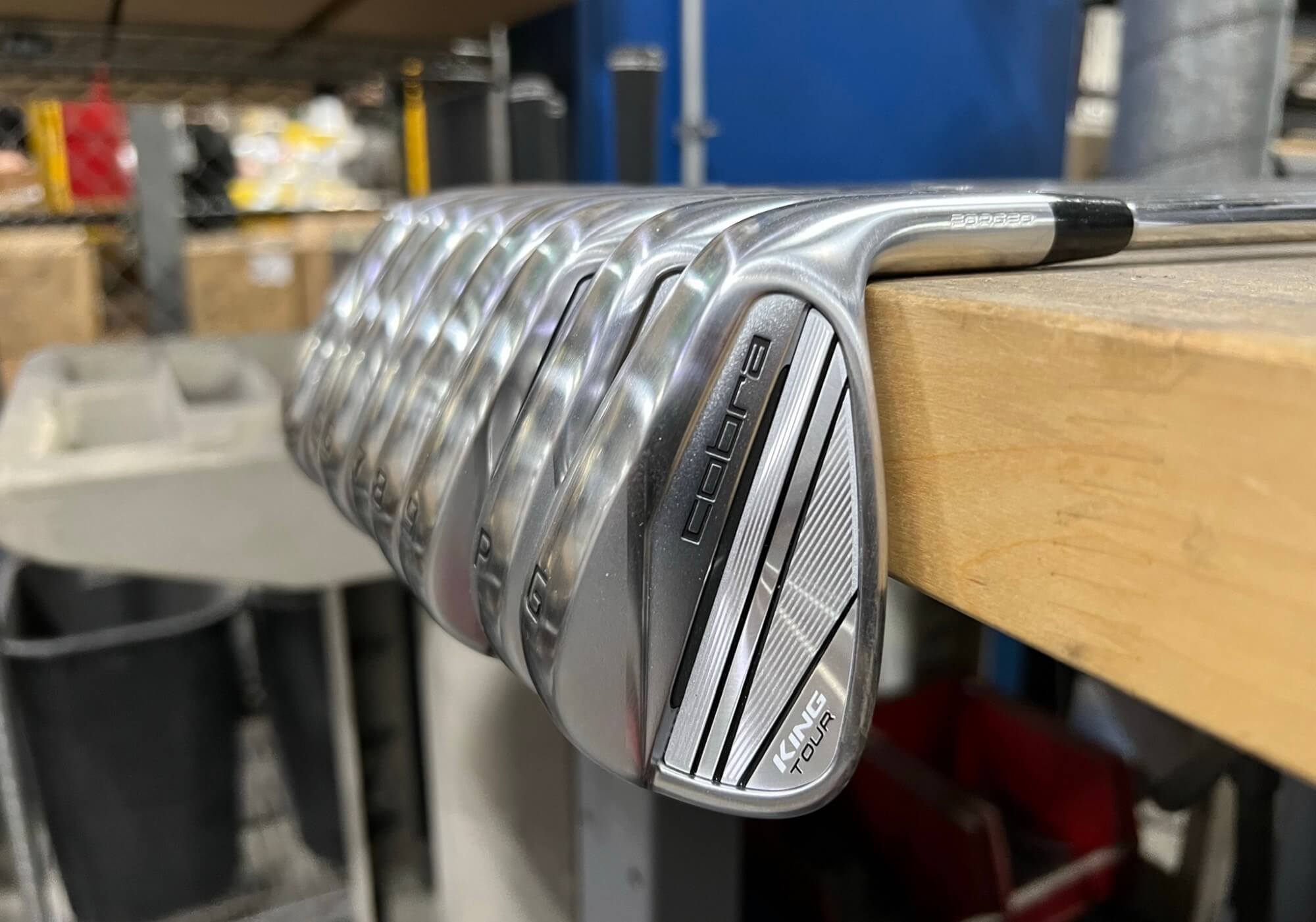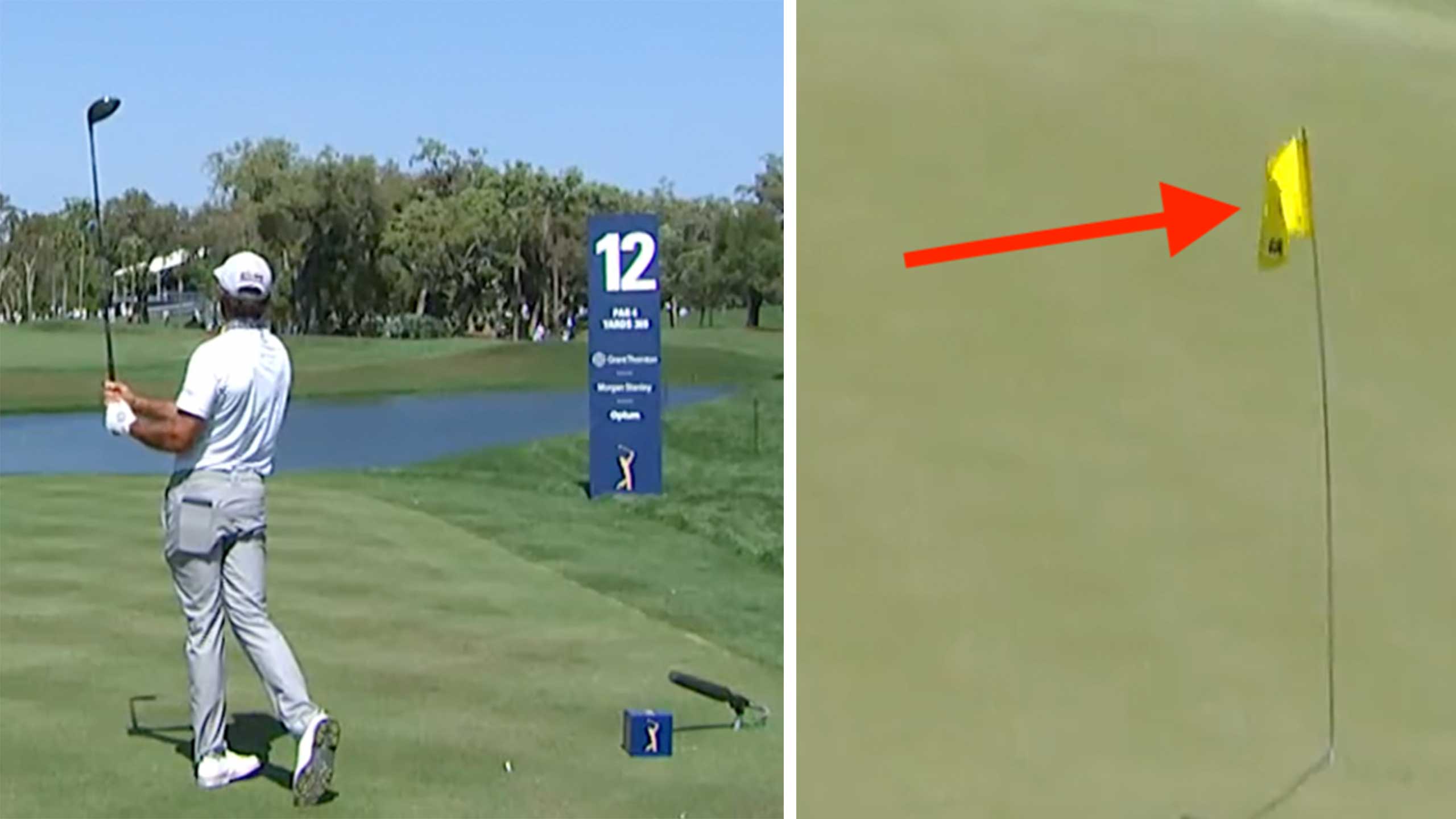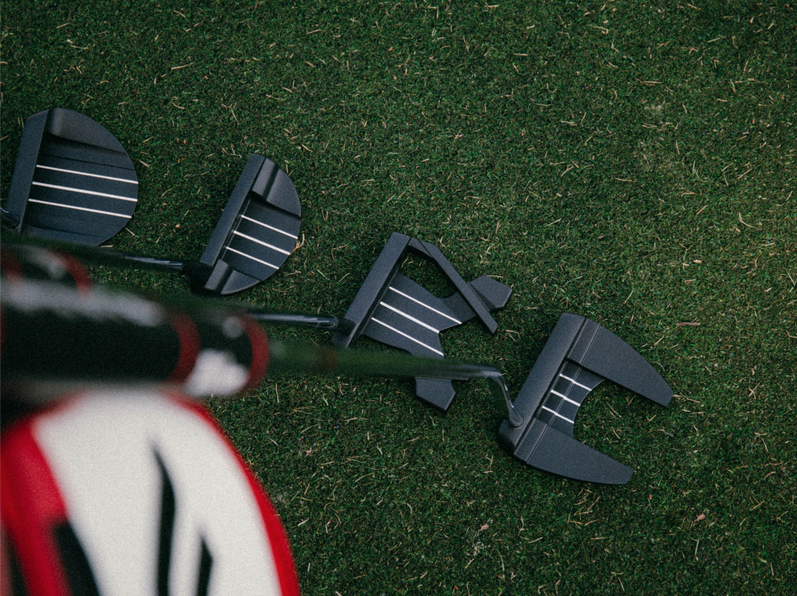It’s hard to think of COBRA as 50 years old. After all, if you were alive in 1973, it’s hard to really wrap your head around the fact that it was 50 years ago.
Australian émigré Tom Crow launched COBRA Golf in San Diego in ’73 and, according to company lore, his goal was simple: Make great golf clubs for regular people at a fair price.
You can make a solid case that COBRA has done just that for the past half-century. And while it’s definitely the little brother in golf’s Big Five, COBRA’s legacy of real innovation rivals that of anyone in the business.
But the question facing COBRA at 50 is as stark as it is simple: Can the company be innovative enough to stay relevant enough in a harsh, unforgiving industry to make it another 50 years?
And can it deliver its message to the masses simply and in a way that will grab theirattention?
Cobra at 50: A Look Back
As years go, 1973 was a watershed. The U.S. finally go out of Vietnam but all anyone could talk about was Watergate, secret tapes and White House plumbers. Sam Ervin ruled the airwaves during the day while Archie, Edith, Gloria and Meathead ruled them at night.
Secretariat won the Triple Crown going away while Bobby Riggs and Billie Jean King duked it out in the Battle of the Sexes (advantage, Ms. King). Bad, Bad Leroy Brown may very well have been the baddest man in the whole damn town but Pink Floyd’s Dark Side of the Moon LP (remember those?) hit the Billboard Hot 100 and stayed there for 15 freaking years.
And we learned that Soylent Green was made from people.
That’s the world into which Tom Crow brought COBRA.

“Mr. Crow actually started making golf clubs in Australia,” COBRA VP of Research and Development Tom Olsavsky says. Crow had been a top amateur before becoming head of R&D for PGF Golf in his homeland. But he had grown disillusioned with PFG after it had been sold to Colgate-Palmolive.
“He found there was growth potential in North America so he came to San Diego. He started by bringing product in from Australia but soon started working to make clubs here.”
The Midnight Train to Carlsbad
COBRA can rightfully take credit for many firsts and innovations. But its first first might be the one with the most lasting effect. After all, have you ever wondered why so many golf companies call Carlsbad home?
“The 1970s were a time of growth and technological introspection in golf,” says Olsavsky. “That was driving the industry away from old-school traditional forgings and wooden heads and into modern castings. And that was driven mainly by the aerospace industry that was based in Southern California.”

There was a plethora of casting companies working in aerospace in the early ‘70s. When NASA pulled the plug on the Apollo program in late 1972, they were left looking for work.
“They started getting into sports equipment,” explains Olsavsky. “Golf clubs, of course. And aluminum baseball bats These casting companies were looking to diversify and get into other industries.”
PING and Lynx had already started shaking the industry up with their cast irons. Crow joined them. But it was his San Diego address that gave him a bit of an edge.
“We were right in the middle of a new supply chain that was developing,” says Olsavsky. “These casting companies found they could outsource some cheaper labor in Mexico. Carlsbad was right in the middle between LA and Tijuana, Mexicali and a couple of other places.”

And although COBRA started in San Diego, the company moved 20 miles north to Sorrento Valley in ’75 and ultimately to Oceanside in the mid-’80s. It was soon followed TaylorMade, Callaway and Titleist.
“We all ended up in Carlsbad,” says Olsavsky. “But COBRA was the original one in 1973 doing things in Southern California with that casting business.”
COBRA at 50: Did You Know …?
COBRA may have one of the richest histories of innovation that virtually no one knows about. Well, there’s that one thing a lot of you know about: the Baffler.
COBRA and Crow introduced the Baffler in 1975 as what may have been golf’s first utility club. Its signature twin-brass rails on the sole helped the Baffler glide through rough like a catamaran through the waves.

The Baffler put COBRA on the map. And if those rails were ever missing from a new club design, Crow was certain to let his team know about it.
“To this day, one of the folks here has a voice mail from Mr. Crow (who died in 2020) saying, in his Australian accent, ‘Where are those f****ing rails?’” says Olsavsky.
Four years later, COBRA introduced its first driver, the 46-inch Long Tom. And throughout the ‘80s, COBRA was a leader in graphite shaft technology.
And they had a very good reason for doing it: They were making their own graphite shafts.

“COBRA bought a company called West Coast Composites and was making its own shafts,” explains Olsavsky. “That was a breakthrough at a time when graphite shafts were seen as expensive and sort of loose in playability but COBRA pioneered how to make the better and expand that market.”
Part of that expanding market was another Crow initiative we take for granted now: Product lines engineered specifically for women and seniors.
“We started pushing that envelope more than anyone else had done,” says Olsavsky. “Mr. Crow looked at it from the business side and said, ‘Why can’t we offer a better product for these people?’”
The Roaring ‘90s
Greg Norman acquired 12 percent of COBRA in 1990 and pumped more than $2 million into the company. And COBRA responded with a decade-long hot streak, albeit with a bit of a false start.
The company released the distinctive-looking Ultramid driver in 1991. Made from Kevlar, the Ultramid was causing plenty of buzz inside COBRA so the company stocked up on components and waited for the orders to roll in.

They didn’t.
And that caused some serious financial hardship. It took John Daly using the Ultramid to win the PGA Championship that August to jump-start the product and change COBRA’s fortunes.
“After I won the tournament, Tom and Jamie (Tom Crow’s son) came up to me and were crying,” Daly recounted at COBRA’s 50th anniversary celebration in April. “Tom said to me, “You just saved COBRA.”

After that, the hits kept coming.
Norman helped design COBRA’s first forged irons and used them to win the ’93 Open Championship. A year later, COBRA rocked the equipment world with the KING COBRA oversized irons. They quickly become the top-selling iron in golf.
“Up until that point, everybody was thinking forgiveness was a tradeoff to distance and that you can’t really have both,” Olsavsky says. “The OS was one of the first irons to give golfers both.”

At the beginning of the decade, COBRA’s sales were in the $30-million range. By 1996, that number reached $300 million. And that was the year Crow sold his company to American Brands, the parent company of Acushnet/Titleist for a reported $700 million.
And within a year, that Tiger Woods kid carpet-bombed the Masters with a KING COBRA Deep Face driver.

New Century – An Uneasy Alliance
If you compared Titleist and COBRA today, you’d see two very different brand identities and two very different customer bases. That dichotomy certainly appealed to American Brands in 1996. But by most accounts the marriage was better in theory than it was in reality. Multi-channel, multi-brand hardly ever works when the sister companies wind up competing with each other. The lower-priced, lower-margin brand almost always winds up cannibalizing the higher-priced, higher-margin brand.
A Cleveland-Srixon-XXIO arrangement works for one simple reason: despite separate brand identities, all three but operate as a unit and don’t compete against each other.

COBRA continued having success through the 2000s with innovative product development, Tour staff victories and sales. But the partnership, ultimately, proved unsustainable and COBRA was sold to PUMA in 2010.
Over the past decade-plus, COBRA has continued to deliver some impressive technology including ONE Length irons, 3-D Metal Jet printed putters and other high-performing products. But despite that, COBRA has a firm hold on a distant fifth position in golf’s Big Five.
To put that into perspective, Honma worldwide outsells COBRA.

COBRA at 50: At a Crossroads
“Innovation” may be the most tired and overused word in golf. We’ve heard it so many times from virtually every OEM that the word itself has lost all meaning. All too often, when an OEM says something is new and innovative, what they really mean is that it’s new and innovative … for them.
“It’s a hard thing to define,” says Oslavsky. “Everyone on the marketing side of the business will say ‘innovative’ about everything. But it’s a challenge to tell the story about something that really is innovative and how we can break through the clutter.”

And that, in a nutshell, is the crossroads at which COBRA is standing. We’re very confident in stating that when it comes to what reasonable people can agree on as innovative, COBRA takes a back seat to no one. But the reason COBRA is in that distant fifth position can be summed up in one word:
Fargiveness.
With one easy-to-remember word – a made-up word at that – TaylorMade was able to tell golfers what Stealth 2 technology did and how it would help. During his stewardship, Crow was a master at that. When he was trying to get club pros in Southern California to give his Baffler a chance, Crow would actually hit golf balls off the pavement to show how well his invention performed.

Say what you want about marketing but the simple truth is that it works. And it’s also clear Callaway, TaylorMade, Titleist and PING are really good at it. Fargiveness may sound silly but it gets the job done.
On the other hand, when the leading benefit of ONE Length irons is that, since every club in the set is the same length, you swing the same swing, you have a message that raises more questions than it answers.
“Cool Stuff That Works”
Marketing is all about owning an attribute. TaylorMade is long, Callaway is huge, PING is forgiving and Titleist is what the pros play. COBRA at one time or another owned each of those attributes. But today? Not so much.
Saying “they need better marketing” is the very definition of “easier said than done.” Marketing is easy, good marketing is hard and effective marketing is an art form. And it costs an awful lot of money.
And not for nothing, a big reason marketing efforts by TaylorMade, Callaway, PING and Titleist are so effective is that their banner products are so good. COBRA at 50 doesn’t take a back seat to any of them, but distilling it all into a simple message is more challenging than you’d think.

“We have a tagline we use internally – and you’ll see it pop occasionally in an ad – but it’s ‘cool stuff that works,’” says Olsavsky. “I think that’s the way Mr. Crow looked at it and we still do today. We’re pushing boundaries all over the place whether it’s 3-D metal jet printing, CNC milling or our original partnership with Arccos.
“We think about it every day. We think about golf clubs every day and we’ll continue to make cool stuff that works.”



